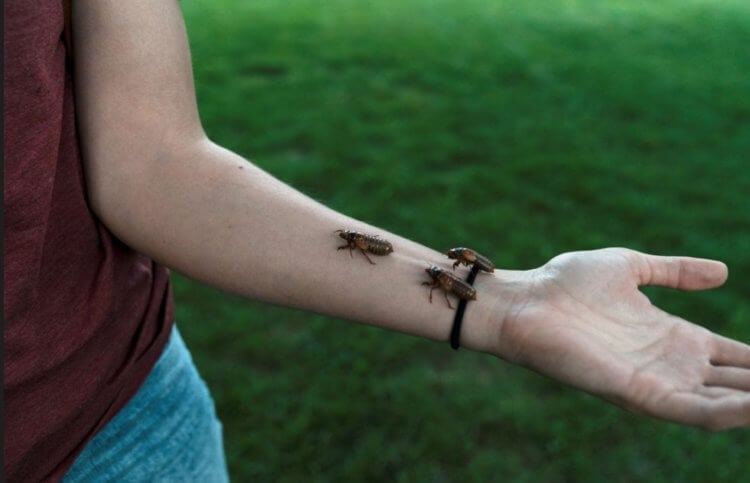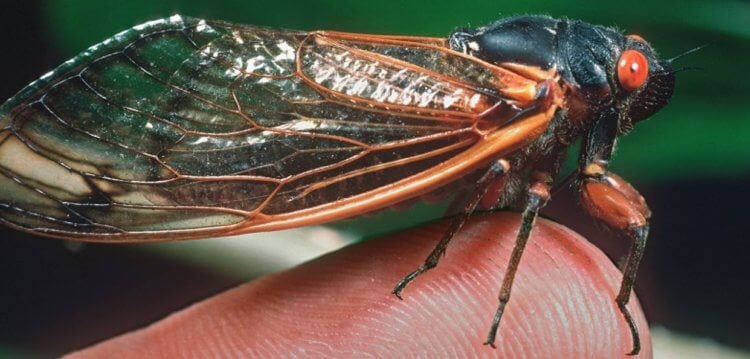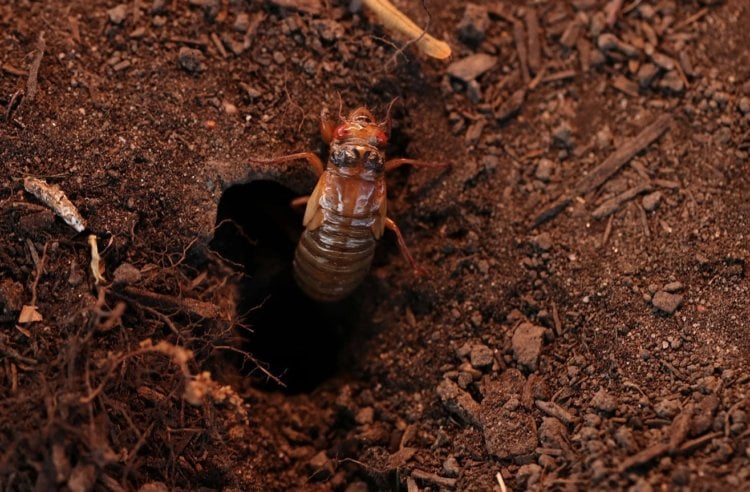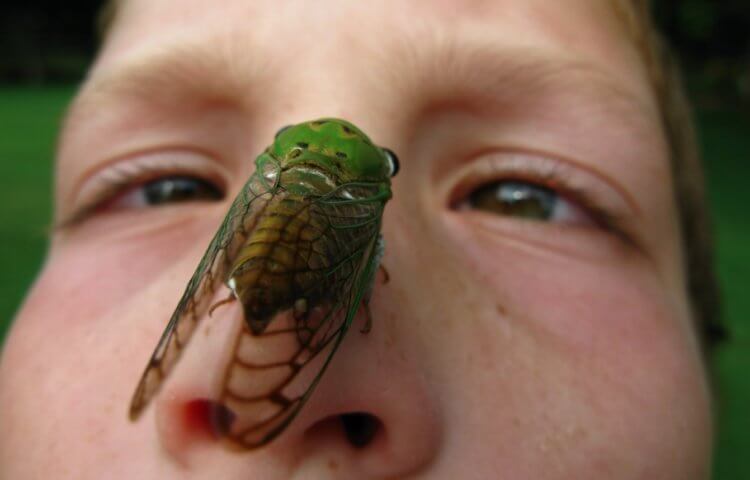In 2024, the United States is expected to experience its first major outbreak of cicada insects in 200 years. Residents of the eastern states this summer may see billions, if not trillions, of flying creatures that produce sounds comparable in volume to the noise of a helicopter engine. There will be a particularly large number of flying insects in Georgia; a million individuals are expected to appear for every four thousand square meters. The invasion has not yet begun, but scientists are already calling this event “Cicadogeddon,” which sounds like the title of a horror movie. This will be an extremely unusual and rare event, so it is worth telling about it in more detail. The most important thing I want to know is how dangerous cicadas are to people and crops. If they can be as dangerous as locusts, why don't the authorities take action?

During a cicada outbreak, thousands of insects can be seen at once. Photo source: reuters.com
Contents
- 1 Cicada invasion in the USA
- 2 What they look like and cicadas sing
- 3 Life cycle of cicadas
- 4 Why are there many cicadas in the USA
- 5 Danger of cicadas to people and plants
Invasion of cicadas in the USA
Many world newspapers, including Fox News, are talking about the impending invasion of cicadas in the United States. The flying insects won't appear out of nowhere – they will come out of the ground in 17 American states. There has not been such a large invasion in the United States since 1803, during the reign of the third American president, Thomas Jefferson. That is, 221 years have passed since the last event.

What cicadas look and sing
Cicadas (Cicadidae) are flying insects that grow to approximately 5.5 cm in length. They have a short head, large eyes, bristle-like antennae and a prominent proboscis. The front wings of cicadas are longer than the hind wings.

Appearance of a cicada. Photo source: blog.adafruit.com
Male cicadas have unique timbal organs on their abdomens, behind their hind legs. They oscillate, causing the cicadas to produce a sound that is characteristic only of them – chirping. Insects “sing” mainly during the hottest part of the day, probably to attract females. Some species of cicadas make a sound similar to the whistle of a steam locomotive.

Cicadas chirping on video
Females do not have timbal organs because, apparently, they do not need them in life. Therefore, if a cicada makes a sound, then it is a male.
Read also: Why are scientists sure that eating insects is good?
Life cycle of cicadas< /h2>
Cicadas lay their eggs under the bark of trees. After hatching, the larvae first feed on plant parts and then descend underground where they eat roots. Cicadas can remain in the larval state for a long time, up to 17 years. Only after a certain period of time do they begin to develop wings and come out.

An adult cicada emerges from the ground. Photo source: thebullamarillo.com
Why are there many cicadas in the USA
In 2024, there will be an especially large number of cicadas in the United States, because two generations of insects will emerge from the ground at once. Individuals from “Generation XIX” remained in the form of larvae for 13 years, and cicadas from “Generation XIII” – 17 years. For two hundred years in a row, only one brood was born, but this year two generations will turn into adults at the same time, which is a very rare event. The next time the cycles of two generations of cicadas coincide will only take place in 2244. So it’s not at all surprising that people are trumpeting from all angles about the coming “Cicadogeddon.”

There are more than 3 thousand species of cicadas in the world that differ in appearance. Photo source: nacekomie.ru
You may be interested in:The rarest insects in the world – there are about 30 of them left in the wild
The danger of cicadas for people and plants
If cicadas were dangerous, US authorities would take steps to reduce the damage. But previous infestations have shown that these insects pose no threat to people, animals or agricultural structures. The most they can do is interfere with their loud chirping. They also lay eggs in young trees, which makes scientists a little nervous.

In some countries, cicadas are eaten as food. Photo source: businessinsider.com
Otherwise, cicadas are even beneficial. They are primarily food for many species of birds and mammals. They also make a big contribution to saturating the soil with nutrients, so agriculture can even benefit from their invasion.
Be sure to subscribe to our Zen and Telegram channels. Also don't forget that we have a Telegram chat!
Unfortunately, there are plenty of other insects in the world that can lead to starvation. First of all, we are talking about representatives of locust species that can grow up to 10 centimeters in length and gather in groups of hundreds of millions of individuals. When flying from afar, swarms of locusts look like dark clouds covering an area of 1,000 square kilometers. The sounds they make can be mistaken for the noise of an approaching thunderstorm. You can read more about these and other creatures that can cause great harm to agriculture in our article “5 insects that harm agriculture and can lead to famine.”